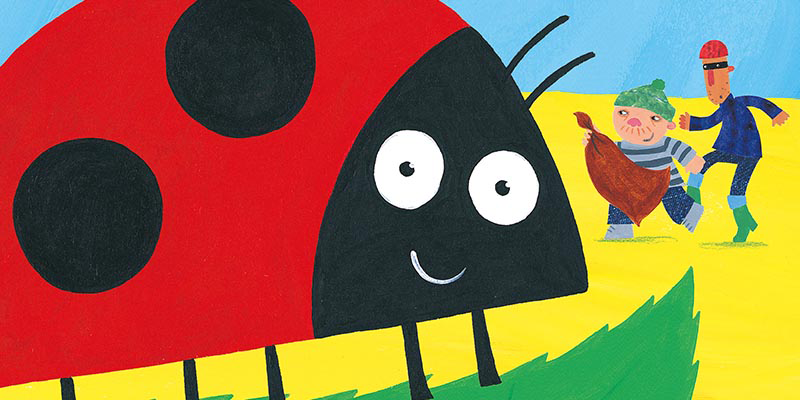Created on: 22 Dec 2020 | Last modified: 11 Apr 2024
HWB Focus: Relationships and Food and Health
Week 1
Start with a scavenger hunt – set a challenge for the children to find as many things which are red through the day (whether at home or in the class setting). This might even be when the child is outside or going for a walk (always making sure that the child only picks up items which are clean and suitable given the current restrictions).
Read the story of ‘What the Ladybird Heard’ by Julia Donaldson – or listen to it being read here - https://www.youtube.com/watch?v=Eu9mPX7DuLA

P1 children (and older siblings) might be interested to hear the story being told by Julia Donaldson. Julia explains how she came to write this story and some of her other songs and books. There is even a guest appearance by one of her favourite characters - https://www.scottishbooktrust.com/authors-live-on-demand/julia-donaldson
Invite the children to create their own Wanted Posters for the robbers, Lanky Len and Hefty Hugh! Encourage them to use descriptive words about how the robbers look, whether they are tall or short and what they were wearing. (Some free resources of poster templates can be accessed here - https://www.twinkl.co.uk/search?term=wanted+poster)
Ladybird Hunt – depending on the time of year, you might want to ask the children whether they can find a ladybird when they are outside? This might lead to a discussion about seasons and when you would find ladybirds. Where do ladybirds live? How many legs do they have? What shape is their body? (Some facts for adults to help answer questions - https://www.natgeokids.com/uk/discover/animals/insects/ladybird-facts/ )
Build a Bug Hotel and see who comes to visit. You can keep a guest log and see if the visitors change, over the different seasons - https://www.yocom/watch?v=OexxoXo9uFk
Week 2
Recap on the story of ‘What the Ladybird Heard’ – whether at home or in class, read the story again with the children or invite the children to tell you or their parents/siblings the story.
Messy play. Making red playdough - https://www.bbcgoodfood.com/howto/guide/playdough-recipe Add some food dye to colour the playdough.
For nursery children – can they make a ladybird using playdoh, junk materials, or draw it with coloured pencils, chalks or paint? What shapes can they see? Talk about circles.
For P1 (and older siblings) - Learn how to draw a ladybird with illustrator, Lydia Monks - https://www.youtube.com/watch?v=KpleGh5-6zU There are follow on videos from which the children can learn to draw all the characters in the book.
For P1 (and older siblings if being completed at home) – the following website could be used to look at speech bubbles - https://www.tes.com/teaching-resource/-what-the-ladybird-heard-characters-with-speech-bubbles-11057249
Have fun with this interactive ladybird counting game - https://www.topmarks.co.uk/learning-to-count/ladybird-spots
By using food dye, colour a water tray or if at home, have fun at bath-time – by making the Red Sea! Allow the children to experiment with different sized containers to explore volume. Many children will also find playing with water emotionally soothing.
Why not have a red lunch – what foods can the children think of which are red in colour? They may want to have strawberries, watermelon, jelly or even a jam sandwich!
Why not do some baking? Here is the recipe for red velvet cupcakes - https://www.cookingwithmykids.co.uk/red-velvet-cupcakes/
For P1 (and older children) – the children might want to design a red lunch menu and invite their family to their red lunch!
Listen to the song of What the Ladybird Heard - https://www.youtube.com/watch?v=7NbyiDpY6Ww
Invite the children to dress up like one of the characters from the book and re-tell the story for a friend, grandparent or other relative over Skype or Facetime.
Note in relation to the use of online resources
Where online resources have been referenced, access to the resource is currently free. In some cases, this may be for a limited period and members should monitor their engagement on this basis. All online references have been selected on an illustrative basis for the relevant potential learning activities. There may be other websites and platforms which will provide similar activities. In referencing these websites, the EIS does not endorse any advertisements shown on the page, the views of those presenting or the wider content of the website.